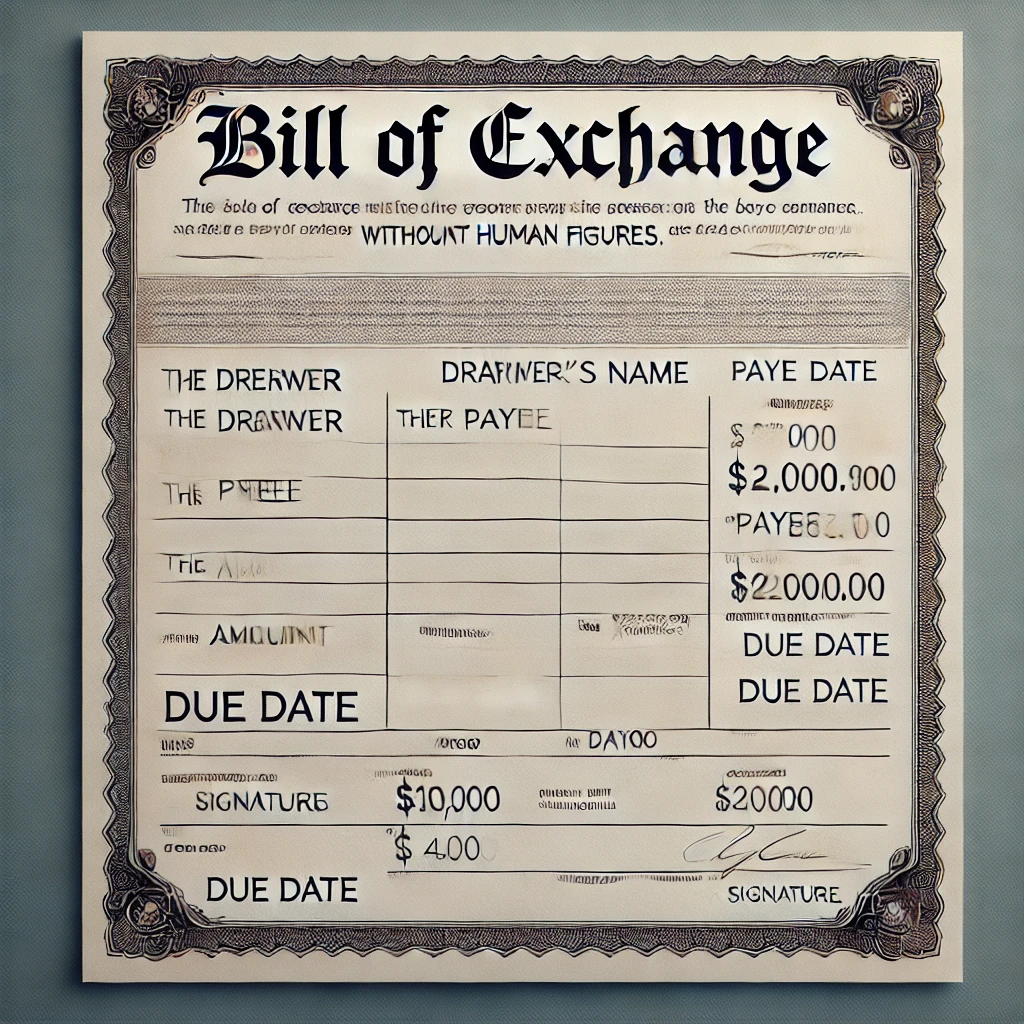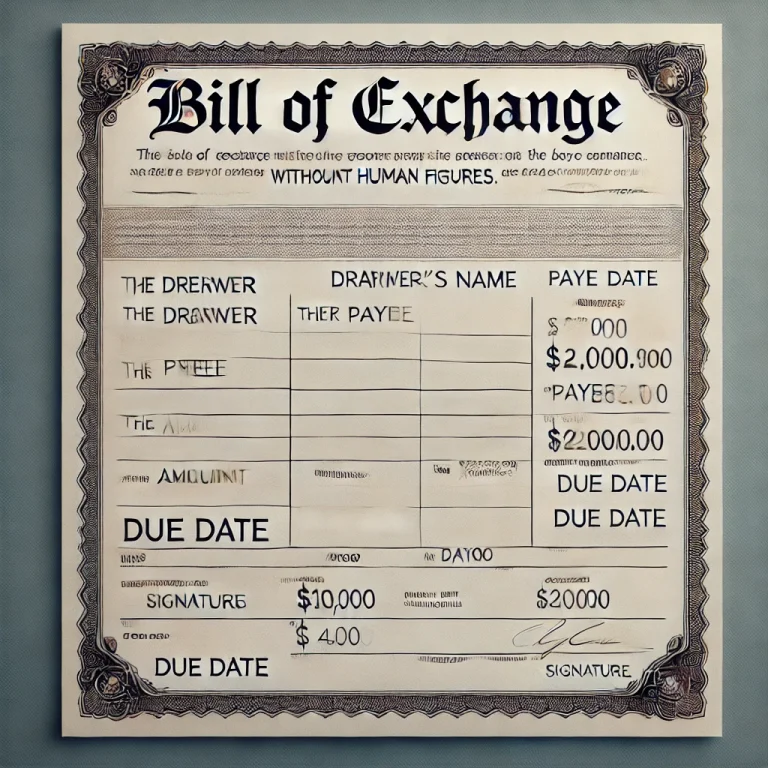A bill of exchange represents an essential financial document utilized in trade, in particular international trade. It is essentially a written request from one party, known as the drawer, to another party, called the drawee, asking them to pay a sum named in the bill to a third party, called the payee, at a specific point in time, or on demand. This document will elaborate on the bill of exchange format and its principal elements for brief reference.
Meaning of Bill of Exchange
A bill of exchange is mainly used in trading to finance the purchase and sale of commodities and services. It is a legal instrument in that it is drawn by a drawer who orders the drawee to pay a given amount either at sight or after some agreed-upon time, either in a term bill or a sight bill.
Significance of a Bill of Exchange
- Security and Confidence: A bill of exchange assures the seller that he will receive payment. It is a legally binding contract, thereby committing the buyer.
- Funding Flexibility: A bill of exchange provides flexibility in funding. A business can sell its bills to a bank and acquire cash immediately, assisting in the management of cash flow.
- International Trade: In international trade, its importance is in linking the laws of different countries and the variations in currency systems and exchange rates, thus improving reliability and transaction abilities.
Bill of Exchange Format
Here is a typical format for a bill of exchange:
- Title: Clearly mention “Bill of Exchange” to differentiate it from others.
- Issue Date: The date of the bill.
- Amount: In words and figures
- Payee’s Name: Full name of the payee being an individual or entity.
- Drawer’s Signature: With date.
- Due Date: The date by which the amount should be paid.
- Information of Drawer: Name and address.
- Terms of Payment: Cash or order.
Explanation of the Format
- Title and Date: The title of the bill, a “Bill of Exchange,” speaks for itself, but it is accompanied by a date, which is crucial in establishing a time frame for the payment.
- Parties to the Bill:
- Drawer: The seller (usually), who draws the bill and is entitled to receive payment.
- Drawee: The buyer or party who accepts the responsibility of making payment.
Payee: Usually the drawer himself or herself; in circumstances involving a third party, the name of the person or company that will receive payment is identified.
- Amount Payable: By outlining the amount payable in words and numbers, it reduces ambiguity.
- Date and Place of Payment: This is critical because the bill may be discounted at a bank or used as proof to raise credit.
- Signature of the Drawer: This signature authenticates the bill, but also provides the legal support for the obligation that the bill supports.
Sample Example for Bill of Exchange Format
| Place: Delhi Date: 22nd September 2024 To: Mr. Raj Shah No. 14, Mega Road, Karkarduma, Delhi. Pay to: Mr. Arun Mehra No. 22, Windsor Street, Karkarduma, Delhi Amount: Rs. 5,00,000 (Rupees five lakh only) Due Date: 22nd December 2024For the value received, please pay to Mr. Arun Meha or order the sum of Rs. 5,00,000 for the goods provided. Payable at: State Bank of India, Main Branch, Delhi Signature: [Anil Singh’s Signature] Mr. Anil Singh No. 14, Commercial Road, Delhi |
Explanation for the above example:
- Place: The city where the bill is created.
- Date: The issue date of the bill.
- Drawee: The individual or entity that will pay the amount (Mr. Raj Shah).
- Payee: The recipient of the payment (Mr. Arun Mehra).
- Amount: The sum of money to be paid (Rs. 5,00,000).
- Due Date: The date by which the payment should be made (22nd December 2024).
- Signature: Signature of the drawer (Mr. Anil Singh) to authenticate the bill.
This format ensures all the critical details are presented for legal and financial purposes.

Conclusion
A bill of exchange is the most significant financial instrument of commerce because it commits a promise of future payment and formalizes trust between parties to a transaction. This is one legible legal method of assuring payment will be made either immediately or later on, assisting cash flows and financial security for businesses. Their ability to be endorsed and traded allows bills of exchange to take a central role in global commerce. Proper comprehension and utilization of bills of exchange can facilitate business account receivables and make business transactions run smoothly, all of which are important factors of the financial management strategy in trade.
Bill of Exchange Format FAQs
1. What is a bill of exchange for?
A bill of exchange is applied to guarantee payments in trade transactions. The seller gets a commitment from the buyer to pay the amount stipulated on a specific date.
2. Who are the parties involved in a bill of exchange?
The three major parties involved are the drawer, that is the party that originates the bill and the drawee that is the party ordered to pay. The payee is the party who receives the payment .
3. Can a bill of exchange be endorsed to another party?
Actually, bills of exchange can be endorsed and transferred to another party; they are an elastic tool of credit management and transfer.
4. What happens if the drawee fails to accept or pay the bill of exchange?
If the drawee refuses to accept or pay the bill, then it can be protested for non-acceptance as well as for non-payment, which eventually gives room to the legal action to recover payment.
5. Is a bill of exchange legally enforceable?
Yes, a bill of exchange is a legally enforceable document, and the parties concerned are bound to execute the terms presented in it according to the provisions of commercial law.

